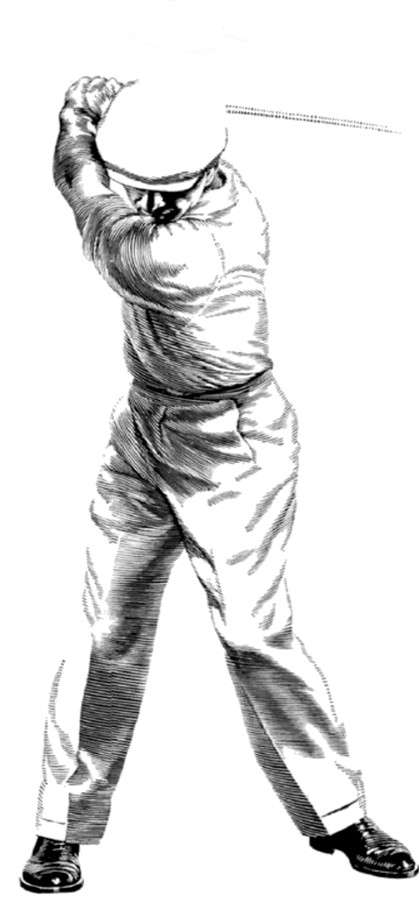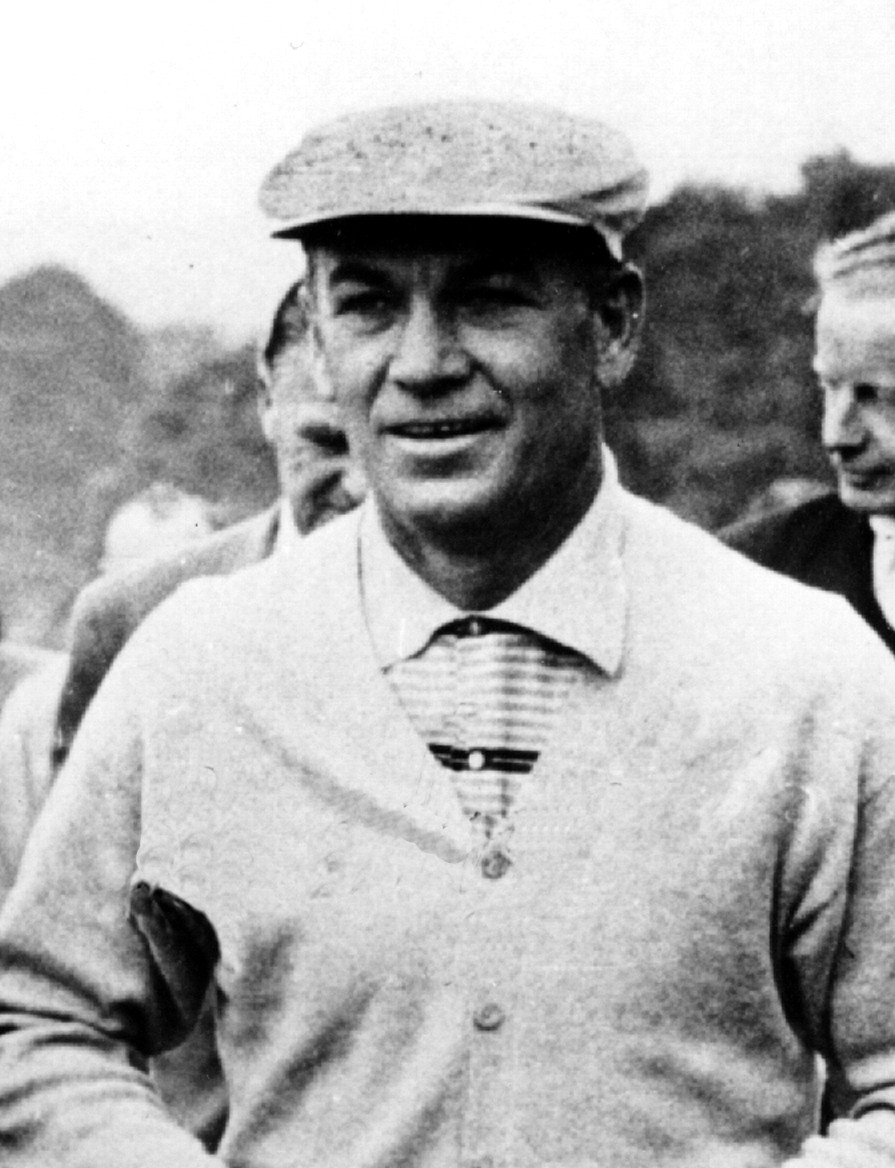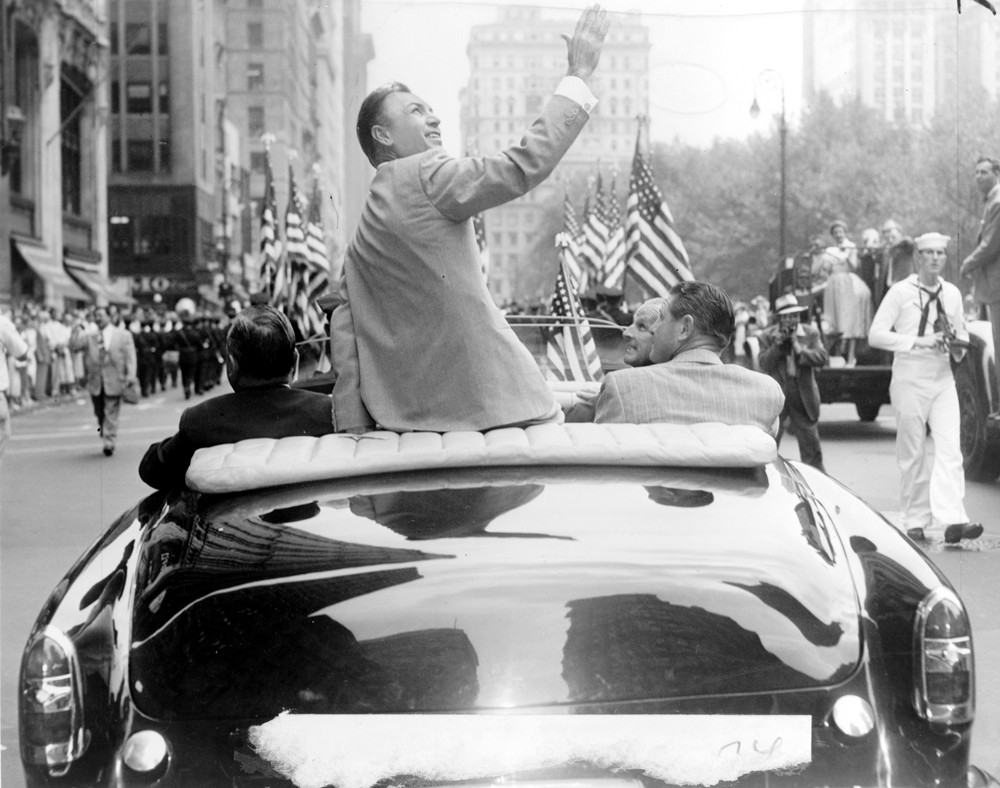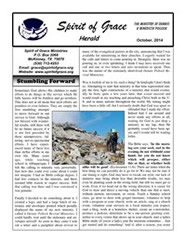Ben Hogan - Master Golfer

by Dennis Pollock
Ben Hogan is ranked by nearly everyone who knows anything about golf as one of the greatest golfers ever to play the game. Many would go further and declare that he was the finest and most accurate golf ball striker ever, better than Nicklaus, Palmer, or Tiger Woods. Hogan was an enigma and a paradox. He grew to become a nice-looking man with a beautiful smile and could exude charm and charisma at times. But much of the time, especially while on the golf course, he was taciturn, withdrawn, and seemed to care almost nothing about what others thought about him. From the moment he picked up a golf club he seemed like a natural and played far better than nearly all of his peers. Yet when he joined the ranks of professional golfers he discovered that his natural gifts had their limits and spent many years struggling to win his first tournament. By the time his career peaked and then finished, however, he had so developed his swing that he was the unquestioned top golfer of his era.
Hogan was a small, intense man. As a child he had always been small for his age, and had to endure being picked on frequently. The family’s poverty and low social status didn’t help. In his childhood Ben adored his dad, Chester Hogan. Chester was a quiet man who suffered terrible and lengthy bouts of depression. One day the quietness of the Hogan home was shattered by the deafening roar of a .38 pistol. The elder Hogan had shot himself in the chest. He lived another twelve hours, enough time for him to say regretfully, “I wish I hadn’t done it.” Ben was devastated. As an adult he never mentioned it, but once in his seventies he did make reference to it for just a moment. As he spoke, tears formed in his eyes – sixty plus years later he was still deeply moved by the tragic loss of his father.
The bullet not only killed Ben Hogan’s father; it destroyed Ben’s childhood as well. Momma was an excellent seamstress and procured a job with a dress company, but it wasn’t enough. Ben was allowed to continue his schooling for a while, and he worked after school selling newspapers. In those days selling newspapers was a tough business. The kids all coveted the best spots, and would fight each other mercilessly for the top spots. Being small Ben wouldn’t seem the best candidate for such a job, but he was strong for his size and had nearly perfect coordination. He soon developed into a fighter and secured a good position to hawk his papers.
Hogan stayed with the job for a couple of years, but when he heard that caddies were getting a whopping sixty-five cents to carry golf bags for eighteen holes (a three to four-hour job) he immediately walked seven miles to the Glen Garden Country Club to check it out. As with the newspaper job, competition was fierce among the caddies, and the veteran caddies, seeing this smaller boy coming among them with the idea of taking some of their income for himself, were not happy. They tormented the new kid all day, rolling him down a hill in a barrel, knocking him down, jeering at him, and never allowing him to get close to the area where the golfers chose caddies. But Hogan would not be denied, and stubbornly kept coming back for more. Eventually the caddies saw they would never discourage this tough little guy, and so set up a fight for him with one of the other boys, a bigger caddie they assumed would beat him easily. They told Hogan that if he could beat this boy, he could become one of them. Hogan accepted the challenge, and with his fighting skills honed by his previous newspaper-selling days, he gave the boy a good thrashing. After that he was left alone, and had a coveted place among the caddies. Soon his keen eyes and sharp mind opened the doors for him to carry the golf bags of some of the richest men and best golfers in Fort Worth.
The quickest way to come to appreciate a sport (or a person, a pet, or a hobby) is through exposure. You cannot get excited about or enthralled with something of which you know nothing. Other than the golfers, nobody knew golf like the caddies, and nearly all of them became golfers themselves. Hogan was no exception. Soon he started buying cheap golf clubs, one at a time, wherever he could find them. Eventually he had his own set – not a matched set to be sure, but still a set of clubs. His natural abilities should have easily made him the best golfer at the country club, but there was another caddie at the club who was even more of a “natural” than Hogan, a boy who was destined to make a great name in golf in his own right – Byron Nelson. To Hogan’s great frustration, Nelson was a slightly better golfer, and due to his friendly, outgoing personality, was more popular than Ben. Byron Nelson matured as a golfer much quicker than Hogan, and would go on to set a record in professional golf for the most consecutive tournaments won (11) that will probably never be equaled. With Hogan’s fierce competitive streak, being constantly beaten and upstaged by Nelson no doubt drove him crazy and stoked his passion to excel all the more.
From his earliest days as a caddy and for the rest of his life, Ben Hogan became obsessed with the game of golf and especially with the idea of attaining the perfect golf swing. After several years as a caddy, he worked for the country club doing odd jobs and repairing the golf clubs of the members. Being at the course every day enabled him to do the one thing he loved even more than playing golf – hitting golf balls on the driving range by the hours. He played in as many tournaments as he possibly could and did well, although he never won in those days.
In his late teens Hogan registered himself as a professional and competed in his first professional tournament. As poor as he was, he could not afford the luxury of playing as an amateur. He had to find a way to combine his passion with a source of income. But his first tournament proved to be an inauspicious beginning, and did nothing to hint that this ambitious, driven little man might one day be celebrated as the greatest golfer in the world. He shot a 78 for his first 18-hole round. This wasn’t terrible, but it was far from the top score of 68. The next day he improved somewhat and shot a 75 – and promptly withdrew from the tournament. This was a strange thing to do, given that had he completed the remaining two rounds with a couple of slightly better scores he might have actually won a little money. But the intense Hogan could not stand the thought of playing on when he had no chance to win. Later he commented, “I found out the first day I shouldn’t even be there.”
The following week he played in a tournament in Houston and shot similar scores. Again at the mid-point of the tournament, he dropped out. Disgusted with himself and his mediocre play he went back home and spent the next year hitting ball after ball at the local driving range. Hitting a golf ball may not seem like a physically taxing exercise, but when the action is repeated again and again it can soon exhaust most golfers. A forty-five minute to one-hour session on the driving range is about all that most can manage. But Hogan would keep at it for six hours a day in a controlled obsession, determined to figure out the secret or secrets that made for a great golf swing.
Over the next few years he made several more attempts to “make it” on the professional golf tour. Twice more he failed, once getting stuck out in a distant city with no more money, being forced to sell his golf clubs for just enough money to pay for a bus ride home. During these years he married a young lady named Valerie, who quickly embraced her husband’s dream of golfing greatness. As they traveled from city to city and tournament to tournament, they stayed in the cheapest possible hotels and ate at the cheapest possible diners. Sometimes, when he was in California, Hogan would pick oranges from a nearby orange grove and they would become his food for the next few days.
A breakthrough of sorts came in the city of Oakland, California. He and Valerie had started this fourth attempt at tournament golf with a nest egg of $1,400, but after months of making little or no money they were down to their last $86. The week before, he and Valerie had argued about going back home. She was for getting out while they still had enough money to get home, but Ben told her that he wanted to play one more week. When he left his hotel for the tournament, he was dismayed to find that overnight someone had stolen the two rear wheels of his car and left the vehicle up on cinder blocks. It seemed like the final indignity to cap off his dismal golf career. He was ready to give up golf and seek another career, but determined that he would play in that final tournament.
Perhaps the theft of his wheels gave him an extra measure of focus, but for whatever reason Ben Hogan played some of the best golf of his life up until then. He shot a final round 67 and though it was not enough for first place, it did enable him to win $285 in prize money. Years later, as a millionaire golfer and businessman, Hogan still called it the largest check he ever saw in his life. It was the breakthrough he needed to continue with tournament golf. And it proved the foreshadowing of things to come. In the months and years following, he began to win money more frequently. He was also recommended for a club job by Henry Picard, who had for some reason taken a liking to the quiet, driven Hogan. This position required little time at the club and was primarily a means by which the country club could boast of having a touring professional as their own head golf pro. This title and part-time job made life a great deal more comfortable for the Hogans, and made it possible for Ben to continue his quest for golf stardom in a less harried and desperate fashion.
Most of the greatest golfers in history were such “naturals” that they began to win tournaments and achieve fame in their early twenties. Tiger Woods won his first major tournament as a pro at the famed Masters Tournament at the youthful age of twenty-one. Jack Nicklaus won his second major at golf’s greatest event, the U. S. Open, at the age of twenty-two. Ben Hogan would be twenty-eight before he started winning at all and thirty-four before he won his first major championship, the PGA.
In those early years Hogan was looked on as an oddity by most of the other tournament golfers. He was sooo quiet – he hardly spoke to anyone. Many of the younger golfers would sit with some of the older, more successful pros and quiz them about their swings, about what it takes to succeed, and would often have them look at their own swings and give advice. But as much as Ben Hogan wanted to improve his game and win tournaments he would never do this. He was the introvert’s introvert. He had a brilliant mind and a powerful golf swing, but he was socially inept. Making small talk was painful to him. He was far more comfortable on the driving range hitting ball after ball hour after hour, than in the clubhouse having a beer with the other golfers, joking and telling stories. And his fierce pride would not allow him to admit that they had anything that would be of any benefit to him. He would rather find out whatever he needed to know by practice, and by trial and error. He later called this approach “digging it out of the dirt.” As a result, it took Hogan longer than might have been necessary to mature into a world-class golfer, but when he finally got there, it was a thing to behold.
In fact, Ben Hogan practically invented the idea of golf practice. In those days most golfers assumed that the best and really the only way to improve one’s golf swing was to actually play golf – to go around the course and play eighteen holes, one after another in consecutive order. But Hogan was of a different mind. He knew that in a single round of golf you might hit one or two four irons, five or six wedge shots, several other clubs, and around fourteen drivers. But he did not want to hit fourteen driver shots. He wanted to hit hundreds of them. He didn’t just want to hit five or six wedges; he felt the need to hit scores of wedge shots over a couple of hours, stopping after each shot to reflect on what had just happened. If he had hit the ball well, why was this? And if poorly, what had he done wrong? And so instead of playing golf rounds, in his spare time you would find him almost always alone on the driving range. Whack, whack, whack – one shot after another for long hours of the day. He was the golf tour’s odd man out – weird, short little Ben Hogan, the man who drove the ball a mile, but who never won, never laughed, rarely talked, and never stopped practicing.
Part 2
 In the late 1930’s all that practice began to pay off and Ben’s golf improved significantly. Still there was one particular area of his game that held him back. People who know nothing about golf might suppose that the ideal golf shot is the one that goes from the golfer straight to his target. In reality that type of shot is impossible to achieve with consistency, and no professional golfer would attempt to become a perfectly straight hitter. Virtually all professional golfers will hit their balls with a slight left to right movement, called a fade (or slice if it gets out of hand), or a right to left movement, known as a draw or hook. Each has their pros and cons.
In the late 1930’s all that practice began to pay off and Ben’s golf improved significantly. Still there was one particular area of his game that held him back. People who know nothing about golf might suppose that the ideal golf shot is the one that goes from the golfer straight to his target. In reality that type of shot is impossible to achieve with consistency, and no professional golfer would attempt to become a perfectly straight hitter. Virtually all professional golfers will hit their balls with a slight left to right movement, called a fade (or slice if it gets out of hand), or a right to left movement, known as a draw or hook. Each has their pros and cons.
From his earliest days Hogan had always hit a low, rolling, right to left hook which enabled him, as a smaller man, to hit the ball as far or farther than most guys nearly twice his size. But his hook was not entirely reliable and sometimes his drives would end up way left in the trees or in the next fairway. He had to find a swing that produced more consistently accurate shots.
Finally, in desperation, he broke down and did something he had sworn he would never do – he asked another professional for advice. He approached Henry Picard, a successful tour player and the man who had recommended him for his country club job. In thirty minutes Picard showed him enough to make a real difference. Hogan followed Picard’s advice and added thousands of hours of practice and experimentation until he found exactly what he was looking for: a swing that produced a higher, rifling shot with a slight left to right fade which landed softly. His accuracy improved dramatically and Hogan began to win tournaments. In later years he greatly appreciated his one-lesson mentor, and dedicated his golf instructional book to him, writing: “Picard is one of my best friends in professional golf.” But Hogan’s idea of a friend and Picard’s were different, and Picard later expressed his surprise, saying: “We weren’t all that close… Ben and I hardly know each other, even today.” In Hogan’s mind friendship meant mutual respect, but not necessarily spending a lot of time together. His time was reserved almost exclusively for his wife and for the driving range.
Part of the reason for Hogan’s unpopularity was his bluntness. In the areas of tact and diplomacy Hogan was a hacker. Once a reporter was interviewing Ben and his childhood acquaintance from Fort Worth, Byron Nelson. For a few years the two travelled in a caravan and their wives became quite close. Nelson was probably the closest thing Hogan ever had to a friend from the ranks of the pro golfers, but it did not last. The reporter asked Ben about Byron’s golf and Ben said exactly what he thought: “Byron’s got a good game, but it would be a lot better if he would practice. Byron’s too lazy to practice.” Perhaps this was a feeble attempt at humor, but it came across as a cutting remark. Apparently Hogan had never read the apostle Paul’s admonition to “speak the truth in love.”
Within a short time after curing his sometimes wild hooks, Hogan was transformed from a good golfer into a great golfer. Those hours on the practice tee began to pay off in rich dividends. Ben Hogan became the most accurate golfer of his day, and by most people’s reckoning, the most accurate golf ball striker of all time, even to this day. When Jack Nicklaus was asked if Tiger Woods was the best ball striker ever, he replied, “No, no. Ben Hogan – easily.”
By the 1940’s Hogan was winning tournaments and by the mid-forties he was winning the major tournaments, such as the U. S. Open and the Masters. During World War II he joined the Army Air Corp and took two years off from golf, but as soon as the war ended and he could be released, Ben was back to his first love – on the golf tour. In the years of 1946 through 1948 he hit his stride. He was beating everybody in those days – even his old caddy buddy, Byron Nelson, who had peaked much earlier but now could not match his intense Texas colleague. In three and a half years after being discharged from the armed forces Hogan won 37 tournaments, including the most prestigious events in the world of golf.
Fame and success were new experiences for him. Poverty, obscurity, and hunger had been with him most of his life. Now he was the man, and everybody clamored for an autograph, an interview, or just to spend time with him. Hogan had arrived as a golfer, but in social skills he was as awkward as ever. When he had been a nobody, few noticed and no one really cared. The other pros left him to himself, which was totally satisfactory as far as Hogan was concerned. But now all eyes were upon him, and his oddities became the talk of the golfing world.
It didn’t help that he quickly developed a loathing for the press. Reporters of that time played fast and loose with the truth (as some still do today), and all the more when it came to putting words in the mouths of players. If they couldn’t get an interview or if the interview they got was inadequate, they would simply make up something for the player to say. Most golfers accepted this reality and didn’t worry about it much. But for the perfectionist and purist Ben Hogan this was an outrage. If he was quoted as saying something, it had better be something he actually said. And when these made-up quotes, attributed to him, began appearing in the papers, Hogan went ballistic. He soon chose a couple of reporters he would talk with, who actually printed the truth, and refused all others. This did not make him a favorite with the press, and when the press dislikes you, the general public will soon know every weakness you have, and every wrong move you make.
Hogan wasn’t popular with most of his fellow pro golfers either. Rightly or wrongly, he came to the conclusion that he played better golf when he kept his mind on his game and refused to chat. Of course this approach fit his introverted personality perfectly. He didn’t have to face the painful process of making small talk or joking with the other players or talking to the spectators. In his mind it was a form of justified aloofness, but almost no one else saw it that way. He began to be known as cold, uncaring, unfriendly, and nearly inhuman.
In February, 1949 Ben and his wife Valerie were driving home to Fort Worth after a tournament in Phoenix, Arizona. The road was icy and a thick fog blanketed the earth. Hogan rounded a curve to see two pairs of headlights coming straight at him. A bus was attempting to pass a truck. Hogan was passing over a culvert and there were guardrails on the sides of the road. There was literally no place to go and nothing he could do. Just before the crash Hogan let go of the wheel and dove over his wife to protect her from the crash. The move saved his life, as the force of the impact jammed the steering wheel into the back of the front seat where he had been sitting seconds before.
Valerie escaped with minor injuries but Ben suffered a broken ankle, a crushed pelvis, a broken rib, mangled legs, a broken shoulder, and bladder injuries. It was said that if he lived he would never walk, and would certainly never play golf again. Almost immediately Ben Hogan set out to prove the experts wrong. Enduring the pain and soreness, he forced himself to walk, first around his bed, then around the room, and finally around the block. When he could walk five miles, Hogan picked up his golf clubs and began hitting practice balls.
Considering the severity of his injuries he made a good recovery, but Hogan would never be quite the same. He would live with pain the rest of his days. Walking long distances would cause great swelling and spasms in his legs. It took almost a year, but eventually Hogan was back playing tournament golf. In the first tournament he entered, he tied for first place but lost in a playoff match with Sam Snead. He walked slower and he spent hours before each round of golf soaking his legs in Epsom salts, methodically smearing them with liniment, and wrapping them in elastic bands and support stockings. But he could still play golf.
In fourteen months after the accident Hogan was competing in the most important of all golf tournaments – the U. S. Open. The course was long and Hogan’s battered legs were barely able to carry him around. Spasms of pain shot through his unsteady limbs as he limped along the golf course. Once, after hitting his driver he nearly collapsed and had to lean on the nearest shoulder to keep him upright. Still he trudged on. That final day involved not eighteen but thirty-six holes which represents about six hours of golf. Somehow Hogan finished the day, and tied for first place with two other pros, forcing a playoff. The next day he played yet another eighteen holes, and this time beat them decisively, becoming the U. S. Open champion once again.
Ben Hogan would have several more amazing years and numerous other tournament victories, but 1953 was for him the most incredible of all. He seemed just as good as ever in hitting golf balls, but the one thing that had changed since the accident was his stamina. Before the accident Hogan would play in nearly thirty tournaments per year. This was now an impossibility for him and he wisely chose to limit himself to between four and six tournaments each year. He chose the tournaments known as the majors plus a few of his favorites. It was a light schedule but his percentage of wins was unprecedented. In 1953 he played in six tournaments, and won five of them.
The capstone of the year, and perhaps his entire career, was winning the British Open, played on ancient courses in Scotland. To be considered an all-time great golfer it was thought that you must win at least one British Open, but until then Hogan had never played in it. Finally, he became convinced that for his legacy’s sake, he must go over to Scotland and try to win the British Open.

Hogan went over to Scotland about a week early to practice and acclimate himself to the golf course and the smaller golf ball. It was a brutal tournament. The course was long and hilly and the grass wasn’t cut nearly so short as on American golf courses. Part of the time the weather was cold and rainy. Hogan played brilliant golf and found that the British and Scotch fans at the tournament seemed to like him and were rooting for him to win – something that was not always the case in America. They nicknamed him “the wee ice-mon.”
The final day of the tournament involved another grueling thirty-six hole, six-hour marathon. In addition to all Hogan’s other physical problems he had caught a bad cold and had to go through the long, cold, rainy, final day with a raging 103-degree temperature, bundled in sweaters. It did not affect his golf. He played magnificently and won easily, setting a new course record. The Brits and Scots were thrilled, as were the Americans back home. Hogan returned in triumph and was given a ticker tape parade in his honor in New York City. The former fighting caddy with a chip on his shoulder had the world at his feet.
Public opinion began to change. In the past the golfing public had never warmed up to Hogan, but now he was seen as the underdog who overcame all odds to win, the loving husband who threw himself over his wife to save her in the accident, the little guy with the gimpy legs but the huge heart. In response Hogan became slightly more open and warm, with the emphasis on the word slightly. Biographer Curt Sampson wrote: “His heightened status fit him like a key in a lock. This was the way for Hogan and his peers to interact – at arm’s length, with deep but often one-sided respect, and at Hogan’s discretion.”
Still, friendship with Hogan had to be on his terms and that normally meant that he might take a few minutes to talk to you after he finished practicing, or ask you to play a round of golf with him. One of his favorites was Jimmy Demaret, an outstanding golfer and a polar opposite from Ben in personality. They played together as partners in team matches, and were seen together enough that Demaret began to be known as one of Hogan’s best friends. But in 1969 Demaret observed, “The strangest thing is that Ben and I have never been close… Nobody gets close to Ben Hogan.” Sam Snead said caustically, “Hogan didn’t like anybody except maybe his wife.”
Part 3
The British Open in 1953 was the last major tournament victory Hogan would ever win. By the next year his putting had so degenerated that he lost his dominance in the world of golf. He had lost his putting touch, which was the one thing in golf that does not respond well to practice. It is a sad fact of golf that while your ability to strike the ball may remain strong through your forties and fifties, putting ability usually departs much sooner. Although he played in occasional tournaments into his mid-fifties, his winning edge was gone, never to return. Even into his sixties he could still strike a golf ball far better than most pros, but his poor putting essentially negated his outstanding striking of the ball. From tee to green he was superb, but tapping the ball into the little hole was a different matter.
Hogan went on to develop a golf club business which was highly successful and gave him an outlet for his considerable energy and the opportunity to remain involved with his beloved golf. Although he carried a battered body and lifelong pain, he lived almost fifty years beyond the accident, made a lot of money, and enjoyed the prestige of being one of golf’s royalty and elder statesmen. In his later years he would go nearly every day to the Shady Oaks Country Club and have his lunch at a special table reserved for him. One biographer described him there as a “cold, implacable, unflappable old man.”
Cold is probably a bit harsh. Actually many can attest that Hogan could be warm and even funny if he chose to – he just didn’t choose to as often as most people. One of his former employees wrote a book recently about Hogan, giving many different examples of his humanness, generosity, and occasional humor. He reports that when Hogan found out that golfer Dick Harmon’s father was in the hospital, he called the elderly man, who was suffering from serious heart problems. He was depressed, and Hogan spent some time on the phone relating his own medical struggles after his auto accident and encouraging him to take it one day at a time. Harmon’s father greatly appreciated the encouragement but eventually succumbed to his bad heart. In the last month of the elder Harmon’s life, Ben Hogan called him every single day.
Similarly, when an acquaintance of Hogan was seriously ill, Hogan visited him in the hospital every day. During this man’s final days, even after he slipped into a coma, Hogan would come to his room and sit with him for an hour or more. Another of Hogan’s more appealing traits was his devotion to his wife. He and Valerie had a close relationship all their lives, far stronger and closer than most golfers who played on the pro tour. Family members generally saw Ben’s softer side. Ben’s niece, Jackie Towery, shared: “He was a great uncle. He was a sweetheart. We were very, very close and in the later years… I would take Ben and Valerie to Shady Oaks Country Club for dinner at least three times a week. He would always pat my hand and tell me how much he loved me.”
Of course there are those other stories that reveal his toughness. Once Hogan was sitting at the men’s grill at the country club when a wealthy and prominent Fort Worth businessman sat down beside him. At one point the man picked up a cloth napkin, blew his nose in it, and then laid it back down on the table close to Hogan. Without saying a word Hogan took out his cigarette lighter and lit the napkin on fire. The businessman, not daring to say anything to Hogan, picked up the napkin, put the fire out and rushed it to a nearby waste can. It would seem that Hogan, like all the rest of us, had his strengths and his weaknesses, his virtues and his flaws.
Ben Hogan died at the age of 84. Even today, golfers study his instructional book and watch grainy videos of his swing, hoping to attain to what Hogan achieved – a golf swing that was about as near to perfection as is humanly possible. Peter Thomson summed up Hogan’s unbelievable skill in striking a golf ball with these words:
He could go a whole tournament, that’s four rounds, without mishitting once. I’ve seen him do it. He was quite a contrast with Arnold Palmer, who could hardly go three holes without hitting one sideways… The precision of Hogan’s striking was incredible.
Lessons for Christians
Looking at the life of Ben Hogan, a number of lessons seem to scream at us:
Perhaps the most obvious lesson from Ben Hogan is the value of a quest for excellence. Hogan was not so foolish as to suppose he could ever achieve golfing perfection, but he determined that he would get as close to it as possible. He once said, “You simply beat balls until your hands bleed and your back aches, and then you beat more balls.” He despised bad golf shots. Sam Snead said of Hogan: “You get the feeling that Hogan hated, I mean hated the mistakes he made. The manner in which he talked about his performance when it was poor was so angry and unforgiving that you found yourself feeling sorry for him.”
If Christian pastors, evangelists, Sunday School teachers, writers, and home group leaders ever gave themselves as completely to achieving a similar kind of excellence, the church might be a lot further along than it presently is. As a writer, a Bible teacher, and an evangelist I recognize that there are a lot more “moving parts” to achieving excellence in what we do in Christ’s name than what Hogan sought. I wish it were so simple as swinging clubs six hours a day for us to become as outstanding in ministry as Hogan was in golf. It is not. Nevertheless, a quest for excellence should play a significant role in every Christian’s ministry. In Colossians we read, “Whatever you do, work heartily, as for the Lord,” and Paul instructs Timothy: “Meditate on these things; give yourself entirely to them, that your progress may be evident to all.” Whether we ever get to a world class level or not, it is our duty to give Jesus Christ the best we have in His service. He is worthy.
Another virtue of Hogan we should emulate is his constant search for improvement. He not only practiced like crazy in his early days when he was playing only mediocre golf. He continued to practice far more than any others even after becoming one of the best golfers in the world. He told announcer Jim Kelley, “I got enjoyment out of improving. If I just hold my own all the time, it didn’t satisfy me. If you improve, you get a great satisfaction of accomplishment.” How different this is from the average worker or even minister who reaches a certain level of competence and then figures he can maintain the status quo the rest of his working or ministering days.
One of the great joys in my life has been to learn new skills, develop in new areas, and be considerably more effective in my later years than I was in my twenties. It is absolutely intoxicating. Spiritually this is called growth. We must grow in the knowledge of God, in the effectiveness of our ministry, in patience and kindness and love, and in wisdom. You should not be making the same mistakes at forty-five that you did at twenty-five. We should be far more effective in whatever we do in Christ’s name in our sixties than we were in our twenties. We may not look as good, but one’s looks don’t get people saved or minister to their spirits. And we are told that we must “grow up in all things into Him who is the head–Christ” (Ephesians 3:15).
A third takeaway from Ben Hogan’s amazing life and career is that we will always do best when we are doing something that we love. Some might suppose that it was a terrible sacrifice for Hogan to give up time with others and time he could have been relaxing for those terrible long hours on the practice tee. But the reality was that there wasn’t much sacrifice involved – he thoroughly enjoyed doing it. In a TV interview he was asked, “Why did you practice so much?” He replied, “I had to – my swing was so bad.” The interviewer asked, “Is that all?” “No,” he replied, “I loved it.” Hitting and observing his good shots and bad shots, making minor adjustments, and grooving a permanent swing that would hold up under pressure was a delight to Ben Hogan. What others would have considered an odious chore, he considered a privilege. He used to say that there weren’t enough hours in the day to hit all the shots he would like to hit.
It is an amazing thought that it took almost ten years for all that practice to really pay off in a big way. For a number of years, it really didn’t seem to be doing him much good, and many of the other golfers who would rather party and drink in between rounds were playing better golf than he was. Somehow Hogan was convinced that if he kept on doing what he was doing he would eventually strike gold. There is a saying that the definition of insanity is to keep doing what you have been doing and expect different results. There is a lot of truth in that but it is not always the whole truth. Sometimes you just have to keep doing what you’ve been doing year after year with an expectation that a harvest will one day appear. In Galatians we read, “And let us not grow weary while doing good, for in due season we shall reap if we do not lose heart” (Galatians 6:9). Hogan reaped a harvest from the hundreds of thousands of practice shots he hit throughout the decade of the 1930’s – but that harvest didn’t really appear until the 1940’s. It is to his credit that he never gave up, never stopped hitting balls, and never stopped seeking the ultimate golf swing. But then, of course, we know why this was. He summed it up with those three words: “I loved it.”
Christians need to pursue fields of ministry that they too will love and in which they will delight. This will make the necessary sacrifices no sacrifices at all. God makes this a reality through His indwelling Holy Spirit, who gives us a passion for serving Christ and ministering to people. We don’t do it because we have to – we do it because we get to, and we thank God for the privilege. The Bible says, “It is God who works in you both to will and to do for His good pleasure” (Philippians 2:13). As you read the biographies of the great men and women of God who have been used by God so powerfully down through the centuries, you find that virtually every one of them were hard workers, totally committed to Christ, His kingdom, and His calling on their lives. And they all paid their dues in the early days. It rarely comes easily.
What can we learn from Ben Hogan’s introverted personality? First, although extroverts are usually much more popular and fun to be around, God made the introvert as well as the extrovert. And sometimes introverts can rise to heights of excellence that most extroverts cannot. We cannot totally blame Ben Hogan for being a quiet man. You could no more have turned Hogan into someone like Sam Snead (who loved to talk, joke, and party), than you could teach a bird to meow like a cat, or a fish to bark like a dog.
People called him shy, but one of his peers stated, “He could be gracious or he might ignore you. It wasn’t shyness – he was too tough to be shy. It was preoccupation.” He was probably right. Many people who are called shy are not really afraid to talk or so intimidated by others that they cannot open their mouths. They simply have such analytical minds that they do a whole lot more thinking than talking. And they often fail to realize that they can come across as aloof and unfriendly.
All the personality types come with both strengths and weaknesses. Outgoing, gregarious types are loveable, but often tend to be undisciplined. Sometimes they waste precious hours in social settings, and never accomplish very much. On the other hand, many introverts are so pathetic in social skills that they turn people off, circumventing the very goals they are working so hard to achieve. The reality is that all of us will have certain areas in our lives in which we must “go against the grain,” and overcome natural tendencies. Some must force themselves to be disciplined while others have to force themselves to be friendly. Some have to force themselves to take a few chances, while others have to really work at being more cautious. It may feel awkward, but we have to try. For the sake of the work of God we cannot allow glaring deficiencies in our lives to spoil the purposes of God for us and through us.
One last thought: as important as it is to strive for excellence in what we do, there is something which is far more important for those who belong to Christ. We must grow in the grace and knowledge of Jesus. Talent, skill, achievement, success… these are all fine, but there is something greater – far greater.
God declares, “Let not the wise man glory in his wisdom, let not the mighty man glory in his might, nor let the rich man glory in his riches; but let him who glories glory in this, that he understands and knows Me… (Jeremiah 9:23, 24). Like Hogan we must take our quest very seriously. The tools of our trade are not five-irons, three-woods, drivers, and putters. We pursue excellence in Genesis, Isaiah, Psalms, the Gospel of John, the epistle to the Romans, and all the other books of the Bible. We grow and develop in praying the prayer of faith. We seek not trophies or winner’s checks, but the crown of life, and the abundant fruit Jesus has promised to all who abide in Him. As it was for Hogan was with his golf practice, we must become convinced that our efforts of seeking God will eventually pay off big time. The Bible tells us that those who come to God must believe that He is, and that He is a rewarder of those who diligently seek Him (Hebrews 11:6).
![]()
To see a full listing of all articles available, go to our Written Devos Page.
For a full listing of all articles as audio mp3
files (free downloads), go to our Audio Devos Page.
For inspirational devos, bios of Christian leaders, free downloads, and the latest SOGM news:
Your donations are needed and greatly appreciated!

















